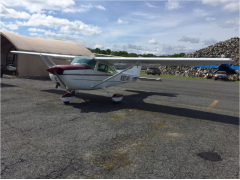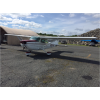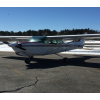If you already hold a Private Pilot certificate, and you’re ready to move into commercial aviation or just want to hone your flying skills even further, then our Commercial Pilot Certificate (Airplane Single Engine Land) program is for you. This program is taught in the Cessna 172RG Cutless, and includes the Complex endorsement if you don’t already hold it.
Prerequisites
To take the FAA Commercial Pilot ASEL practical test, you must:
Be at least 18 years of age.
Be able to read, write and speak the English language
Receive ground school in the knowledge areas listed in FAR 61.125
Pass the FAA knowledge test before taking the practical test.
Hold at least a Private Pilot certificate.
Hold an appropriate medical certificate (at least Class III to take the test, but at least Class II to exercise Commercial Pilot privileges)
You must have at least 250 hours total flight time, including at least:
100 hours in powered aircraft, at least 50 of which is in airplanes
100 hours as pilot in command (at least 50 of which is in airplanes)
50 hours of PIC cross-country flight (at least 10 of which is in airplanes)
Training Time Required
To receive the Commercial Pilot certificate with an Airplane Single-Engine Land rating, the FAA requires:
At least 20 hours of flight training that includes:
10 hours of instrument training (at least 5 of which must be in a single-engine airplane).
10 hours of training in a complex airplane (that is, with a constant speed propeller, flaps and retractable landing gear).
3 hours of dual instruction in preparation for the practical test.
One dual day VFR cross-country flight of at least 2 hours with a straight line distance of more than 100 nm from the departure point.
One dual night VFR cross-country flight of at least 2 hours with a straight line distance of more than 100 nm from the departure point.
At least 10 hours of solo flight that includes:
One cross-country of at least 300 nm total distance with landings at least at three points, one of which is at least 250 nm straight line distance from the departure point.
5 hours in night VFR conditions with at least 10 take-offs and landings at an airport with an operating control tower.
Note that flying experience you have before beginning the Commercial Pilot course may count toward the required flight times. For example, if you hold an Instrument Airplane rating, you will already have met the Commercial Pilot requirement for instrument training.






